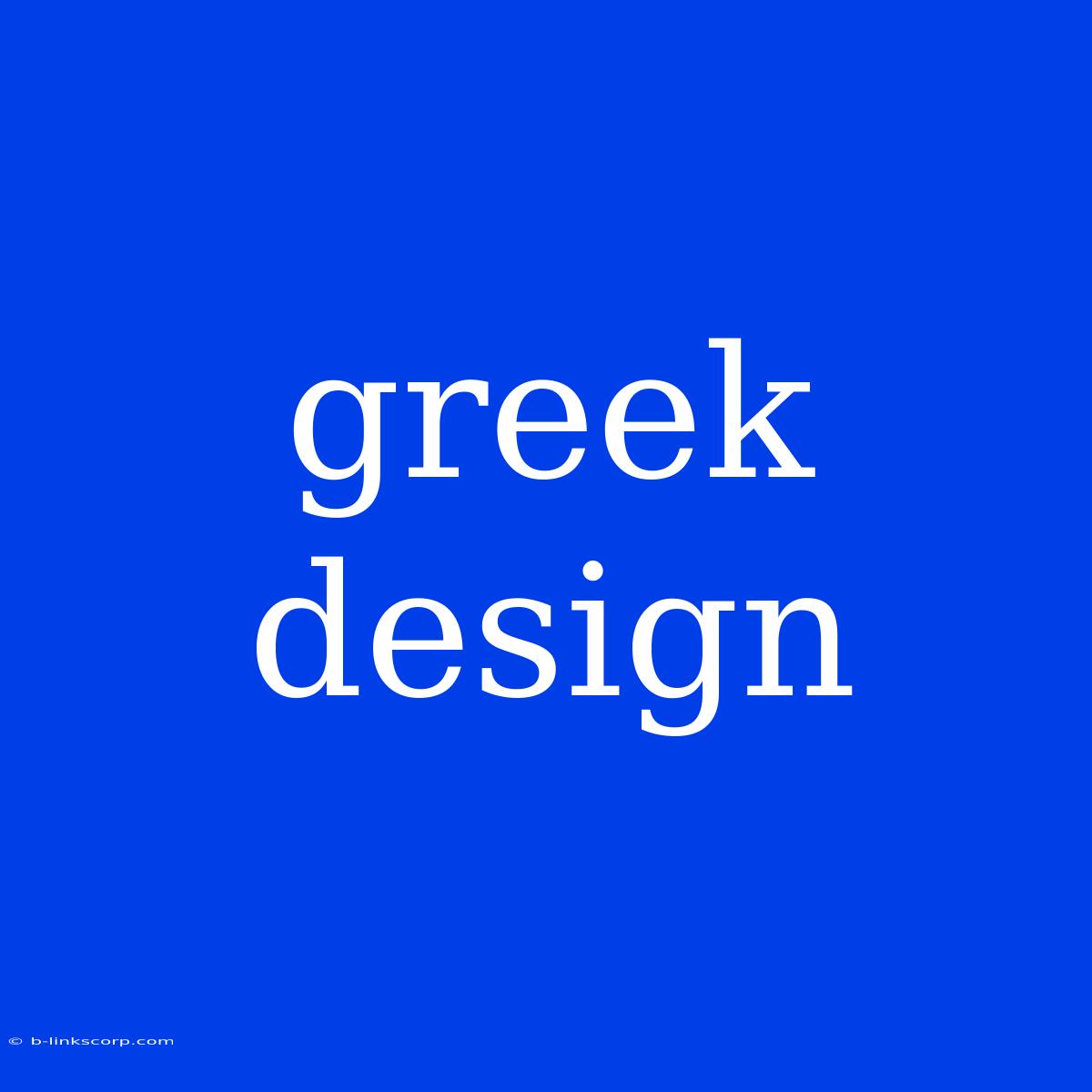Greek Design: A Timeless Legacy of Beauty and Functionality
Greek design, a captivating blend of aesthetics and practicality, has profoundly influenced the world, leaving an enduring mark on art, architecture, and culture. From the majestic temples of ancient Athens to the modern interpretations in contemporary design, Greek design continues to inspire and captivate.
The Roots of Greek Design:
Greek design emerged from a civilization renowned for its intellectual curiosity, artistic prowess, and appreciation for beauty. The foundation of Greek design lies in the principles of order, balance, and harmony, embodied in their iconic architectural structures.
Here are key characteristics of Greek design:
- Geometric Patterns: The use of geometric patterns, including triangles, squares, circles, and spirals, is prevalent in Greek design. These patterns were often used in textiles, pottery, and architecture, bringing a sense of balance and visual rhythm.
- Classical Proportions: The Greeks valued balance and proportion in all forms of design. The Golden Ratio, a mathematical formula representing ideal proportions, is evident in their architecture and sculpture. This concept of harmonious proportions creates a sense of beauty and visual balance.
- Use of Natural Elements: The Greeks drew inspiration from the natural world. The use of natural materials such as marble, wood, and bronze, as well as motifs inspired by plants, animals, and the human form, are prevalent in their design.
- Focus on Functionality: Despite its aesthetic appeal, Greek design placed a strong emphasis on functionality. Greek pottery, for example, was not only beautiful but also practical for everyday use. Similarly, their architecture was designed to be robust and withstand the test of time.
- Emphasis on Simplicity: The Greeks valued simplicity and elegance in their design. They believed that true beauty resided in the refinement of form and the avoidance of unnecessary ornamentation.
Greek Design's Enduring Legacy:
The influence of Greek design continues to be felt today. Its principles have been adopted by architects, designers, and artists across the globe.
Here are examples of Greek design's enduring influence:
- Architecture: The Parthenon, a masterpiece of Greek architecture, stands as a testament to the enduring power of classical design. Its influence can be seen in neoclassical architecture throughout the world, from government buildings to private homes.
- Art: Greek sculptures, renowned for their realism and beauty, have inspired countless artists over the centuries. From the iconic Venus de Milo to the powerful sculptures of the Olympian gods, Greek art continues to inspire awe and wonder.
- Fashion: Greek motifs, such as the laurel wreath, the olive branch, and the Greek key pattern, are often incorporated into modern fashion designs. The fluidity and simplicity of Greek clothing are also echoed in contemporary fashion trends.
- Interior Design: The timeless elegance of Greek design has found its way into modern interior design. The use of natural materials, geometric patterns, and classic furniture styles creates a sense of sophistication and timeless beauty.
Conclusion:
Greek design is more than just a style; it represents a way of thinking and a set of values that have stood the test of time. Its enduring appeal lies in its harmonious blend of beauty, functionality, and a deep respect for the natural world. As we move forward, Greek design continues to inspire and inform our own creative pursuits, reminding us of the timeless principles of beauty and order.

